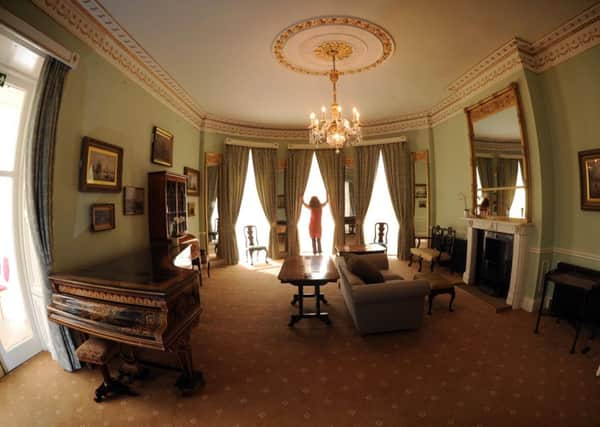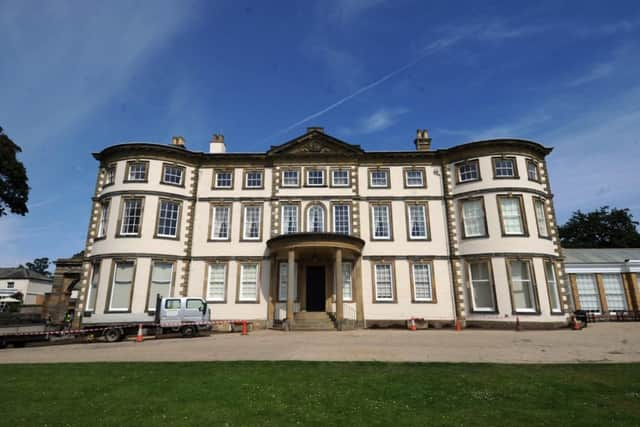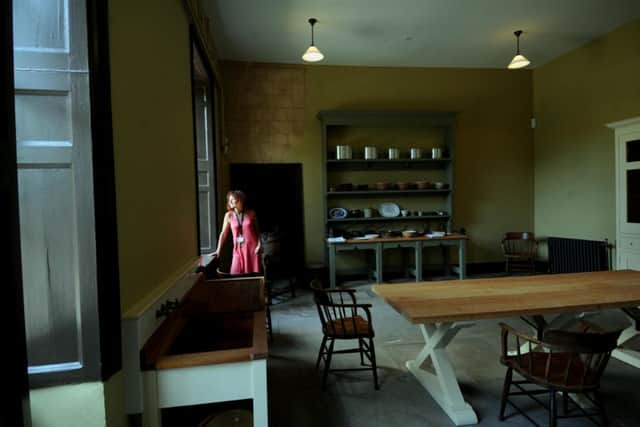How the other half lived


A look back at the 1901 census reveals that Yarburgh Lloyd-Greame lived there at the time, along with his wife Dora and sister Maria. The three lived in comfort and were well looked after by a team of 11 live-in staff. They also had a groom, coachman, gardener and other employees on their hefty payroll.
In Edwardian times, life at Sewerby House, as it was then known, must have been reminiscent of a scene from Downton Abbey. Yet, just two decades later and in the face of mounting financial pressures, the family were forced put their home on the market. It was bought by the Bridlington Corporation for £45,000 and the Lloyd-Greames downsized to a property in Pickering, presumably with a drastically reduced workforce.
Advertisement
Hide AdAdvertisement
Hide AdIn the intervening years, the house has had a name change – to Sewerby Hall – and become one of the region’s best-loved visitor attractions. Now in the ownership of East Riding Council, it recently reopened following a £2.6m restoration project, which took almost a year to complete.


Whilst the bulk of the money was spent on structural work, the interior has been refurbished to show visitors how the house would have looked in its heyday.
“When the Greame family left in 1934 they sold everything in a six day sale,” says curator Janice Smith. “The golden age of the country house estate was over. Yarburgh Lloyd-Greame had been selling off large parcels of land, so I suspect he was feeling the pinch. The agricultural depression of the late 19th century and the war years had a massive impact. When Yarburgh died in 1928, there were death duties to pay and I don’t think provision had been made.”
Janice and her colleagues used paint scrapings together with a set of photographs dating back to 1910 – thought to have been taken for a Country Life magazine spread that never materialised – to build a picture of how the rooms would have looked. The result is a series of opulently-furnished reception rooms and bedrooms decorated predominantly in an elegant palette of soft greens and blues.
Advertisement
Hide AdAdvertisement
Hide AdIn sharp contrast, the restored service wing, which was added in 1810 and comprises the kitchen, housekeeper’s sitting room and butler’s pantry, is painted in practical shades of brown, what Janice describes as “country house drab”.


In the kitchen, the range has been reinstated and the original flagstones uncovered. By studying which areas of the floor had been worn down most, Janice and her colleagues were able to determine where the main work areas were. Authentic-looking reproduction furniture has been positioned where the original pieces would have stood. Although the function of each of the rooms has changed over the years, most of the original features remained intact, including the ornate Corinthian columns in the study and the imposing oak panelling in the original dining room, which later became a sitting room.
Janice explained: “The house was used for many things during its corporate years but a lack of funds has preserved it as well as can be expected.”
Built between 1714 and 1720, Sewerby Hall started life as what Janice describes as a modest three-storey villa: “It would have been slender and narrow, with the servants sleeping on the top floor, the family apartments on the first floor and six modest rooms on the ground floor, but with top quality fittings and fixtures.”
Advertisement
Hide AdAdvertisement
Hide AdAs the Greame family accumulated greater wealth, they extended the house, creating space for a new dining room, which later became the billiard room and library when an even larger dining room was added. The vast bookcases in the billiard room are the only original piece of furniture that remains.
Janice explained: “The bookcases were the only item that didn’t sell in the Lloyd-Greame’s sale. They ended up in the cellars at Bridlington Town Hall and in various other buildings around the town. We salvaged them and brought them back.”
The rest of the fittings and fixtures in the house have been sourced from other museums and collections, using the photographs taken in 1910 as a guide.
In a real coup for Sewerby, 40 pieces of furniture have been loaned from the Victoria and Albert Museum.
Advertisement
Hide AdAdvertisement
Hide AdEvery minute detail has been recreated as accurately as possible, from the positioning of the paintings on the walls to the replica fabric produced to cover the sofa in the elegant bow-fronted drawing room, which was based on a sample found in the National Archive dating back to between 1890 and 1910. Appointed to work on the project in 2006, Janice has overseen each step of the transformation and admits that she “loved every minute”.
In a bid to give visitors a real flavour of what life at Sewerby would have been like, a number of interactive elements have been added to the displays. In the service wing, you can watch a film about the lives of key members of staff. Upstairs, a bedroom has been dressed as a nursery complete with toys that younger visitors are encouraged to play with and there’s even a dressing up room where they can try on Victorian and Edwardian costume. The kitchen will host traditional cooking workshops for schoolchildren and other parties. There’s also an exhibition about the restoration project, which highlights the fact that decorating and furnishing the rooms was just one aspect of a mammoth programme of work carried out by the council to ensure that Sewerby Hall is preserved for future generations to enjoy – hopefully for another 300 years.